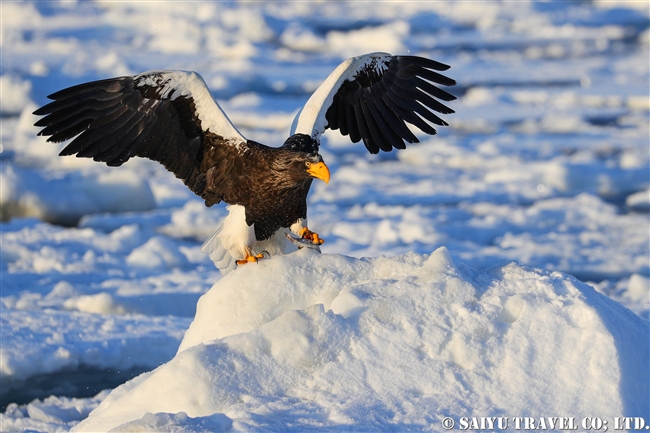
This is a Steller’s Sea Eagle that we observed during a Drift Ice Cruise from Rausu, Shiretoko Peninsula. It is such a handsome looking bird of prey, with white wings, a white tail, and a large yellow beak and yellow legs.
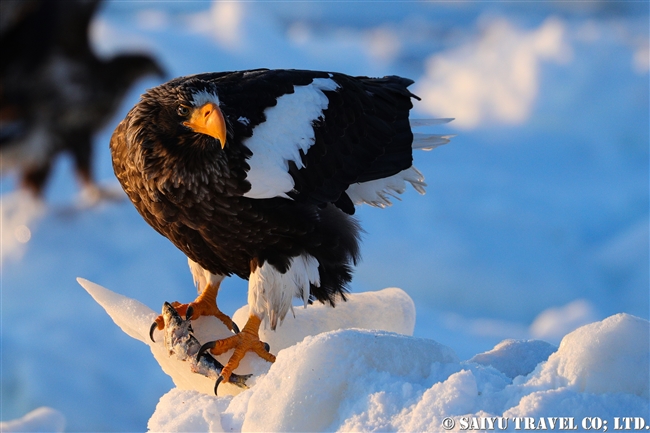
When open, the wingspan measures 220 to 250cm (7.2 – 8.2 feet), and the weight can be heavy from 5 to 9 kg (11-20 lbs), and the females are usually a bit larger than the males.
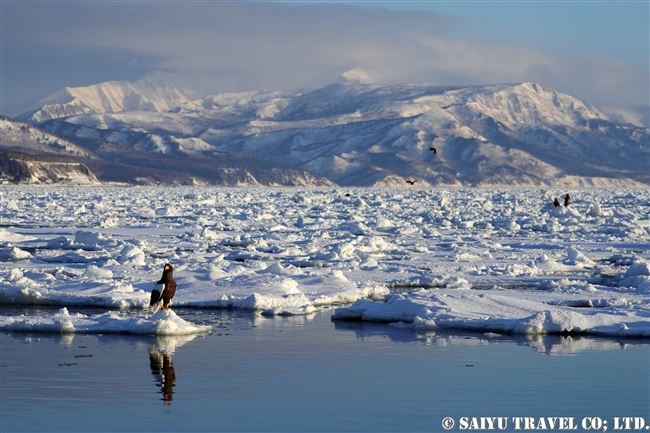
They breed on the coasts of the Sea of Okhotsk and the coast of Kamchatka Peninsula, and in the winter a small part of that population will come to the southern part of the Kuril Islands and Hokkaido. There are about 3,200 pairs in the world, and about 2,000 individuals are thought to migrate to Hokkaido for the winter.
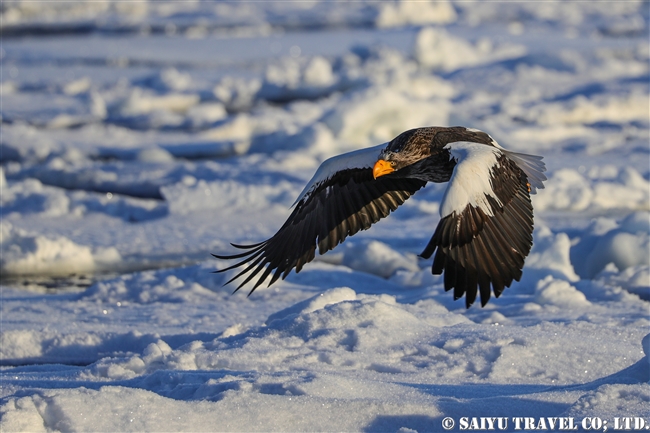
The name “Steller’s Sea Eagle” came from the German naturalist Georg Wilhelm Steller.
Steller was of German but he joined the Russian expedition of Vitus Bering who set out to explore the Kamchatka Peninsula and the Aleutian Islands. In 1741, after Bering died of illness on Bering Island, now part of the Commander Islands, the remaining crew and Steller were able to escape and returned home to tell the world of the newly discovered sea animals, such as the Steller’s sea cow and the seabirds living in the area.
Then, as an unfortunate result of being “discovered,” the Steller’s sea cow was overfished and gone extinct within only 27 years of its discovery. Spectacled cormorants were also extinct by 1852.
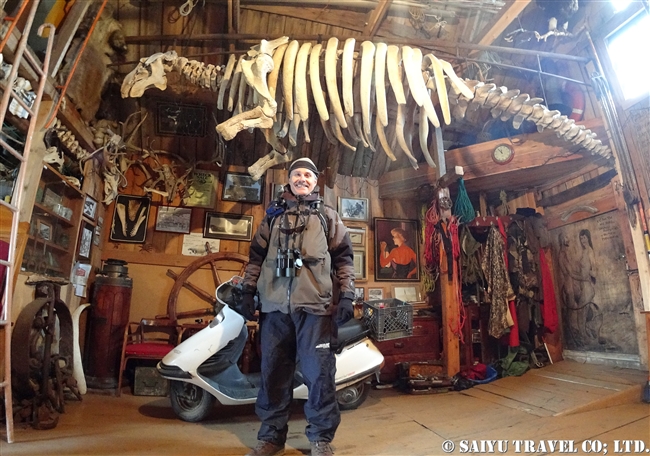
The reconstructed skeleton of the Steller’s sea cow on display in a private gallery on Bearing Island, Commander Islands.
Returning to the Steller’s sea eagles, they spend the winter in Hokkaido and move back north in the first week of March. It is thought that these Sea eagles did not originally migrate long distances, but came floating on the drift ice to Hokkaido and the Kuril Islands. Then they would return to their breeding grounds for the courtship season. They will lay 1-3 eggs between April to May.
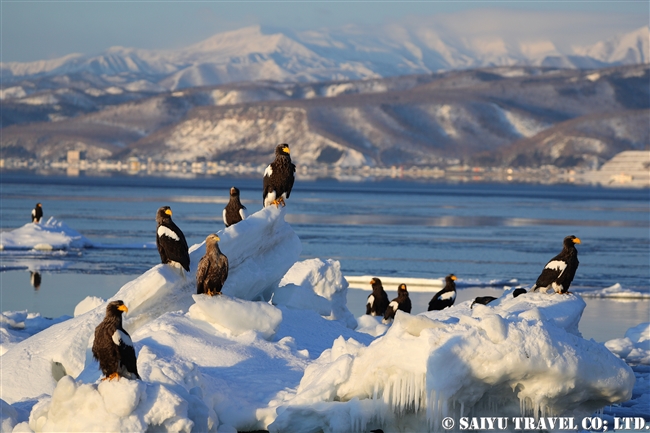
The Steller’s sea eagles against the backdrop of the town of Rausu. Soon, they will be heading back North.
Photo & Text: Mariko SAWADA
Observation: February 2018, Rausu, Shiretoko Peninsula, Hokkaido
*Contact us, Saiyu Travel for more information about wildlife and bird watching in Hokkaido. We can make various arrangements for your trip. We have a guesthouse, Shiretoko Serai, in Rausu, Shiretoko Peninsula.




